![]() Liberating Structures in Development
Liberating Structures in Development
Do you want to invent or experiment with new Liberating Structures?
Below is a group of new and very promising microstructures in the works. They need more vetting, sifting and sorting with different types of organizations and groups to be added to the LS repertoire.
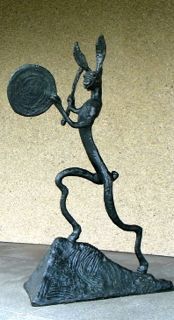 The nascent LS are arrayed in an order from more developed to less developed, plus a few important twists on existing LS at the end. Each has its own materials to review and an evaluation form to use after your field tests.
The nascent LS are arrayed in an order from more developed to less developed, plus a few important twists on existing LS at the end. Each has its own materials to review and an evaluation form to use after your field tests.
Download the files and take a look. Give them a try. Join in the design and invention process. If you want to dig into a wider, deeper, and messier development experience, visit the LS in Development Trello board. Tell us about your experience.
Talking with Pixies Identify beliefs and assumptions that limit your progress [presentation materials, field test evaluation]
MindMeld Make all the observations, patterns, and action ideas visual for everyone to see [description, presentation material, field test evaluation]
Network Patterning Cards Identify and shape more productive network patterns [presentation & description]
Future~Present Develop imaginative tactics for scaling up from local to global action [description downloaded doc, example from the Global Gathering, presentation materials, field test evaluation]
Positive Gossip Start turning around a destructive pattern of negative gossip
Mad Tea Create a bigger, richer, and funner context for taking action & gaining insight
Caravan Practice requesting and giving help from a supportive subgroup
GriefWalking aka Transition Walk Tap into social support after a loss or profound transition
Strategy Knotworking Answer six questions to shape strategy together
Relational Coordination Mapping
Lean Coffee [see link to leancoffee.org, a structured yet agenda-less meeting]
Back To Back Listening Practice Deeper Listening and empathy with colleagues [punctuation]
::::: ::::: ::::: ::::: ::::: ::::: ::::: ::::: ::::: :::::
Important Twists on Existing LS microstructures:
Liquid Courage [incorporated as a twist on Impromptu Networking]
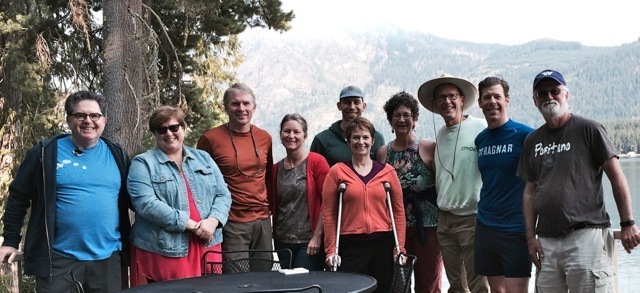 An inventive group working with the LS in development backlog at Lake Wenatchee. Greg Myers, Molly Angel, Jeff Carter, Shannon Patterson, Fisher Qua, Charley Haley, Nancy White, Keith McCandless, Alex Dunne, Larry White (from left to right).
An inventive group working with the LS in development backlog at Lake Wenatchee. Greg Myers, Molly Angel, Jeff Carter, Shannon Patterson, Fisher Qua, Charley Haley, Nancy White, Keith McCandless, Alex Dunne, Larry White (from left to right).
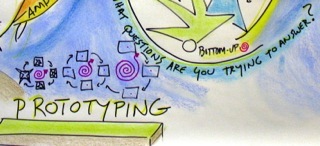
Liberating Structures are invented in more than one way. Some of the current repertoire of 33 (v 2.2) are adapted from well documented change methods and others were invented in the field over the last 12 years.
Each LS has been tested in numerous settings with different types of organizations and groups. They all generate productive endpoints – results that are often better than what you expect or can imagine. Each LS specifies a detailed set of elements designed to generate a specific form of results. The microstructural design elements include:
- a structuring invitation
- how the space is arranged and what materials are needed
- how participation is distributed
- how groups are configured
- a sequence of steps and time allocation
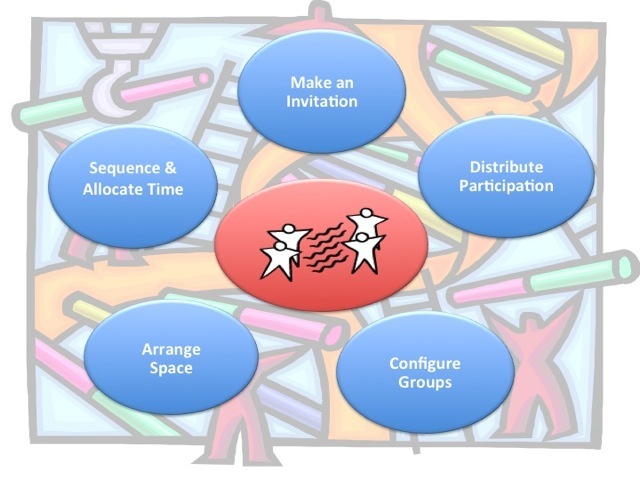
These five elements are the minimum specifications (Min Specs) or essential foundation required to generate results with each Liberating Structure. It takes time and practice to arrive at the minimum. A successful liberating microstructure is built chunk by chunk, often failing forward to make progress.
Perfection is achieved, not when there is nothing more to add, but when there is nothing left to take away. Antoine de Saint Exupery
 The LS backlog as of August 2015.
The LS backlog as of August 2015. 
Self-Assessment Questions for Liberating Structures in Development
Do you have an idea for a new Liberating Structure? Here are questions you can ask yourself to test the fit:
- Simple: Does your approach require only a few minutes to introduce?
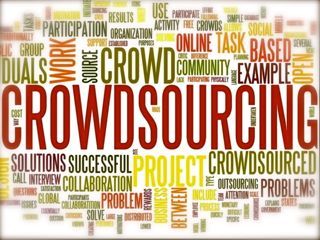
- Self-spreading: Is it easy to copy without formal training?
- Expert-less: Is it possible for beginners to get positive results after a first experience?
- Results-focused: Is it likely to generate better-than-expected innovative results?
- Rapid cycling: Can it be facilitated in fast iterative rounds?
- Inclusive: Does it invite everyone to shape next steps together?
- Multi-scale: Does it facilitate advances in everyday meetings, big projects, strategy-making, and transforming movements in groups of any size?
- Seriously fun: Does it boost joy, freedom & responsibility when used?
- Adaptable: Does it spread with fidelity to Min Specs while adapting to local settings? Can it fit easily within or alongside other change initiatives?
- Micro-structured: Does it precisely structure an invitation, distribute participation, configure groups, arrange space, and sequence time?
- Modular: Can it be combined & recombined endlessly with other LS?
Tell me and I’ll forget. Show me and I may not remember. Involve me and I’ll understand. Native American Proverb


